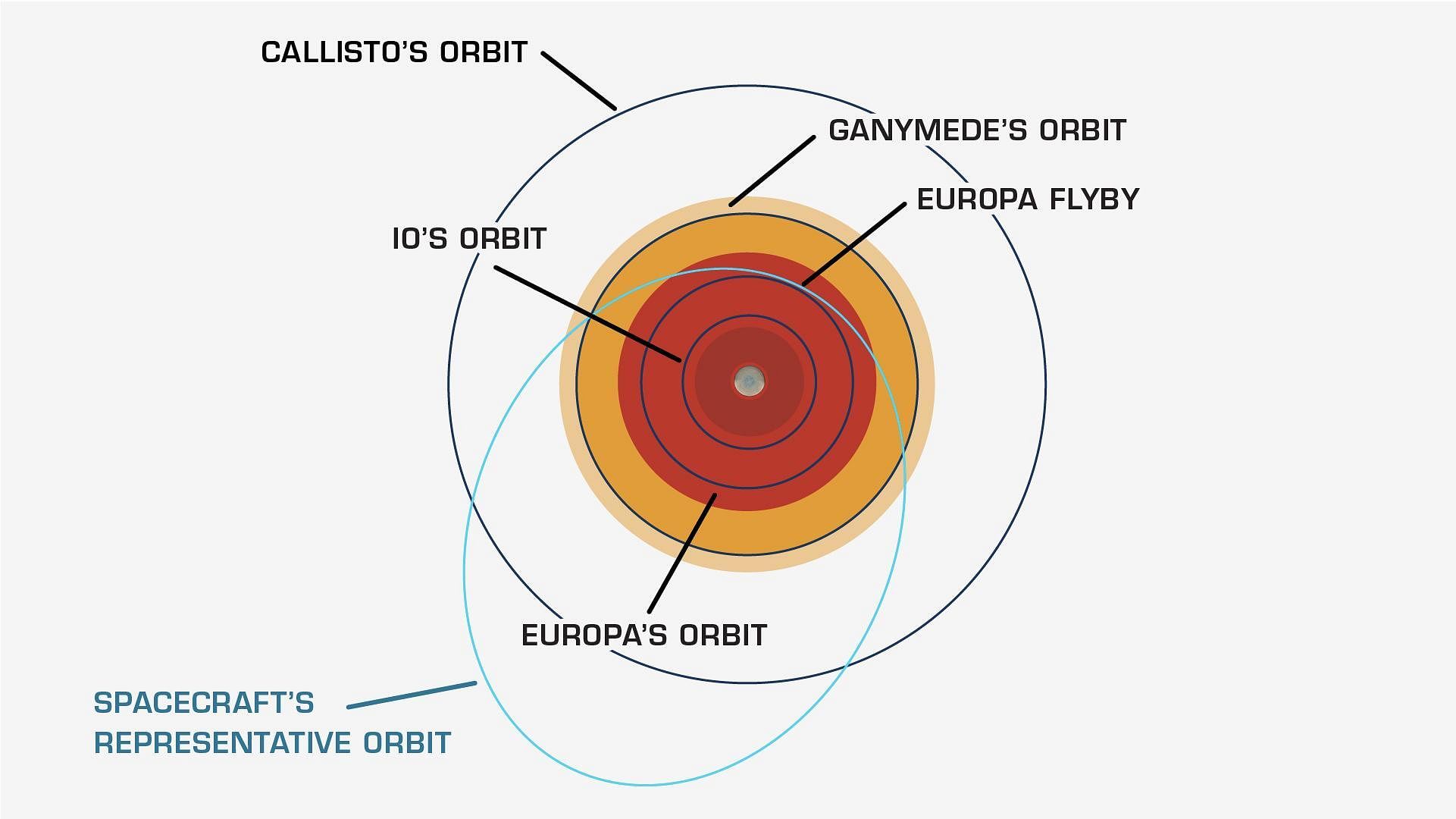Bengaluru: The National Aeronautics and Space Administration (NASA) has launched a space mission that is going on a 2.9 billion kilometre trip to one of Jupiter’s moons. The Europa Clipper mission launched Monday has begun its 5.5 year-long journey to the largest planet in the solar system. It will study the icy, white moon—Europa—which holds a liquid water ocean underneath a layer of solid ice crust and may harbour necessary conditions and environment for life.
The spacecraft will fly by Mars next year, and then Earth again in 2026, before swinging around with increased momentum and flying directly to Jupiter. It is expected to reach its final destination—Jupiter’s orbit—in April 2030. There, it will perform flybys of Europa, swinging very close to it in the orbit around Jupiter.
The mission was launched from NASA’s Kennedy Space Center in Florida on SpaceX’s Falcon Heavy rocket.
Why Europa?
Liquid water is one of the most exciting aspects of a planetary body to astrobiologists because it is one of the key ingredients necessary for life, as we understand it on Earth. Water helps in regulating temperature, and dissolving and spreading nutrients, which played a key role in development of life on Earth and continues to sustain it.
Apart from Earth, there are other astronomical bodies in the solar system containing liquid water, often referred to as ocean worlds. These are moons of gaseous planets, such as Jupiter’s Europa, Callisto and Ganymede; Saturn’s Enceladus, Titan and Mimas; Uranus’s Oberon, Umbriel and Titania; Neptune’s Triton; dwarf planets Ceres and Pluto; Pluto’s moon Charon, and so on.
Of these, Saturn’s Enceladus and Jupiter’s Europa, which is closer to us, are of particular interest. These two moons have a full icy shell, giving them a white colour. Underneath, they are thought to contain a warmer, liquid water ocean that could potentially sustain life.
Europa is the same size as Earth’s moon and the water underneath could potentially be more in quantity than the water on Earth. According to astrobiologists, the moon contains necessary ingredients for life, including carbon, oxygen, nitrogen, sulphur, phosphorus and hydrogen. The core of the moon is also warmer, as it is constantly tugged by other moons as well as Jupiter itself, which bend and flex orbiting bodies. Thus, the water inside the icy shell is also potentially much warmer than the surface of the moon.
Additionally, Jupiter’s magnetic field also exposes the surface of moons, like Europa, to high amounts of radiation, which can in turn react with organic molecules and oxygen on the moon’s surface, leading to chemical reactions that could trickle down inside the moon.
Also Read: Earth has a ‘mini moon’ for 57 days. All you need to know about this bus-sized celestial visitor
The timeline
The mission is divided into two main phases—the journey and then the science. The spacecraft is powered by solar panels and will utilise the gravitational pull of both Mars and Earth to loop around and increase momentum to reach Europa quicker. The process will take over five years, reaching Europa in 2030.
The mission will orbit around Jupiter and will not land on the moon. It will instead use nine of its scientific payloads to deeply study and understand Europa. It is also one of the largest NASA missions in size, with a solar panel span of 22 metres.

The scientific objectives of the mission is to study habitability and select a landing site for a future Europa lander mission, expected to be launched in 2027. It will focus on understanding three basic aspects of the moon—liquid water’s dynamics, chemical processes and energy transfer through the moon.
In the process, it will study the icy shell and subsurface ocean to characterise it fully. Additionally, the mission will understand the composition of the ice and water, and study the geology and geomorphology or surface changes on the icy moon.
Owing to very high radiation from Jupiter, the spacecraft is thought to be safer in a highly elliptical orbit around Jupiter, flying close to Europa each time, instead of entering in orbit around Europa directly. Its instruments are encased in titanium and aluminium shields to protect them from Jupiter’s radiation, and are expected to function for four years after entering the planet’s orbit, before they get damaged from the radiation.
Apart from NASA, the European Space Agency (ESA) also plans to study these moons. The agency’s Jupiter’s Icy Moons Explorer (JUICE) mission, which will study Ganymede and Callisto, is already on its way.
(Edited by Mannat Chugh)
Also Read: Chandrayaan-3’s Pragyan rover landed in previously unknown crater, one of the oldest on the Moon






